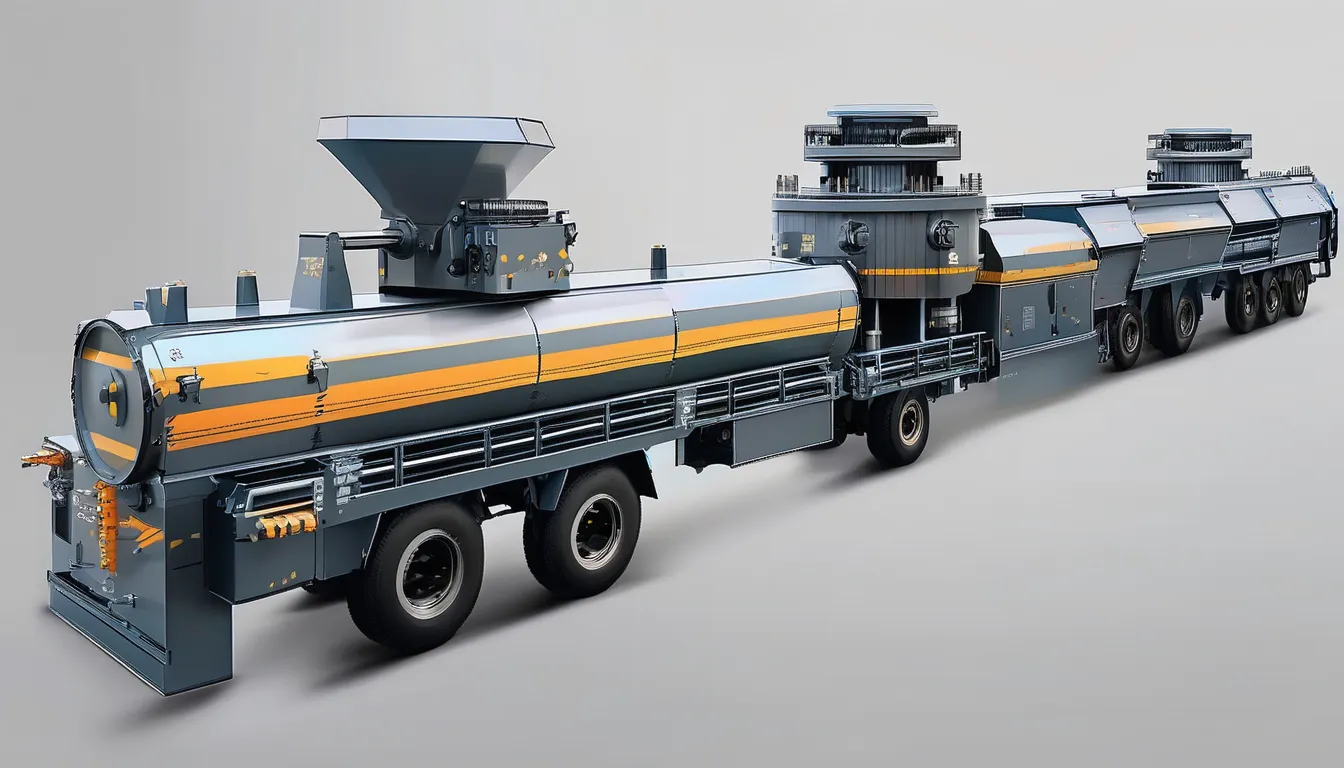When you consider the advancements in industrial gearbox design, it’s clear that leading manufacturers are pushing boundaries in performance and efficiency. You’ll find that innovations in materials like carbon fiber and specialized alloys are not just about durability—they’re also about weight reduction and increased load capacities. Plus, the integration of smart monitoring solutions can transform how you approach maintenance. But that’s just the beginning; the real question lies in how these developments can specifically impact your operations moving forward. What might these innovations mean for your own processes?
Advanced Material Technologies
Embracing advanced material technologies is revolutionizing industrial gearbox design. You’ll find that these innovations lead to significant improvements in performance, durability, and efficiency.
Manufacturers are now adopting lightweight yet strong materials, such as carbon fiber and advanced alloys, which allow for gearboxes that can handle higher loads without adding excessive weight. This shift not only enhances the gearboxes’ lifespan but also reduces energy losses during operation.
You’re likely to notice that these materials can withstand extreme temperatures and corrosive environments, making them ideal for various industrial applications. The use of 3D printing technology is another exciting development, enabling you to create complex geometries that were previously impossible with traditional manufacturing processes.
As a result, you’ll see more compact designs that save space and minimize installation costs. Additionally, the precision offered by advanced materials leads to improved gear meshing, which further optimizes efficiency.
In your experience with industrial china Custom gear solutions es, you’ll appreciate how these advancements contribute to lower maintenance costs and reduced downtime. Adopting these advanced materials in your projects could be the key to staying competitive in a rapidly evolving industry.
Smart Monitoring Solutions
Smart monitoring solutions are transforming how we manage and maintain industrial gearboxes. These innovative technologies provide real-time data on gearbox performance and condition, allowing you to identify potential issues before they escalate into costly failures.
By integrating sensors and IoT devices, manufacturers enable you to monitor parameters like temperature, vibration, and oil quality continuously. With these insights at your fingertips, you can make informed decisions about maintenance schedules and operational adjustments.
You won’t have to rely solely on periodic inspections or guesswork; instead, you’ll have access to actionable data that drives efficiency. This proactive approach not only extends the lifespan of your gearboxes but also optimizes overall system performance.
Additionally, many smart monitoring solutions come with user-friendly interfaces, making it easy for you to interpret data and respond swiftly. Alerts and notifications remind you when maintenance is needed, ensuring you stay ahead of potential issues.
Enhanced Gear Design
As real-time monitoring advancements reshape maintenance strategies, they also pave the way for innovations in gear design. You’ll notice that leading manufacturers are focusing on enhanced gear geometries, which optimize load distribution and improve overall performance. By utilizing advanced materials, these designs can withstand higher stress levels, reducing the likelihood of failure and extending service life.
Additionally, you’ll find that specialized coatings are being introduced to minimize friction and wear, further enhancing durability. These coatings not only protect the gears but also contribute to smoother operation, which is crucial in high-demand applications.
Another key aspect of enhanced gear design is the integration of modularity. This allows for easier customization to meet specific application needs, reducing downtime during replacements or upgrades. You can expect to see gear systems that are simpler to maintain, enabling quicker adjustments and repairs.
Lastly, advancements in simulation technology enable manufacturers to predict gear behavior under various conditions more accurately. This means you can rely on more robust designs that are tested and validated before implementation.
Energy Efficiency Innovations
Energy efficiency is becoming a top priority in industrial gearbox design, and you’ll see how new innovations are making a significant impact.
Manufacturers are now focusing on optimizing gear tooth profiles and reducing friction, which directly enhances the performance of gearboxes. By utilizing advanced materials, like lightweight alloys and composites, you can expect less energy loss and improved durability.
Another exciting development is the integration of smart technology. These systems monitor performance in real time, allowing for adjustments that minimize energy consumption.
With predictive maintenance tools, you can prevent inefficiencies caused by wear and tear, ultimately saving on energy costs.
Variable speed drives (VSDs) are also gaining traction, enabling gearboxes to operate at optimal speeds based on demand.
This flexibility not only enhances efficiency but also reduces wear on components.
Modular and Customizable Systems
In today’s industrial landscape, modular and customizable systems are revolutionizing gearbox design, allowing businesses to tailor solutions that meet their specific needs. With these innovative systems, you can easily adapt your gearboxes to various applications without the need for a complete redesign. This flexibility not only streamlines production but also reduces downtime and costs.
You’ll find that modular components enable you to mix and match different parts, optimizing performance based on your operational requirements. Whether you need higher torque output or specific speed ratios, you can configure your gearbox to achieve the desired results. This adaptability ensures that you’re not constrained by one-size-fits-all solutions.
Moreover, customizable systems allow for future upgrades as your business evolves. If you decide to expand operations or enhance efficiency, you can modify your gearbox without investing in an entirely new unit. This long-term viability is crucial for maintaining competitiveness in a fast-paced market.
Conclusion
In conclusion, the innovations in industrial gearbox design are transforming how you approach efficiency and performance. By leveraging advanced materials, smart monitoring, and enhanced gear geometries, you’re not just boosting durability but also tailoring systems to meet your specific needs. Embracing these innovations means you can expect improved energy efficiency and longer operational life. Staying updated with these trends will give you a competitive edge in your industry, ensuring your equipment performs at its best.





